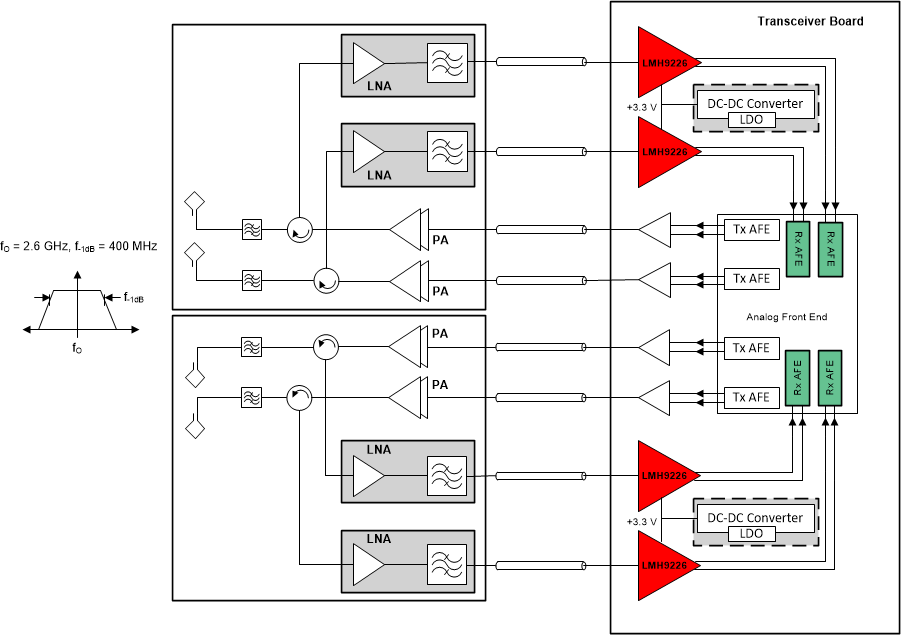JAJSIA6 December 2019 LMH9226
PRODUCTION DATA.
9.2 Typical Application
The LMH9226 is typically used in a four transmit and four receive (4T/4R) array of active antenna system for 5G, TDD, wireless base station applications. Such a system is shown in Figure 18, where the LMH9226 is used in the receive path as the final stage differential driver to an ADC input. TI typically recommends reducing the trace distance between the LMH9226 output and the ADC input to minimize amplitude and phase imbalance during the single-to-differential conversion.
 Figure 18. LMH9226 in a 4T/4R 5G Active Antenna System
Figure 18. LMH9226 in a 4T/4R 5G Active Antenna System The 4T/4R system is easily scaled to 16T/16R, 64T/64R, or higher antenna arrays that result in proportional scaling of the overall system power dissipation. As a result of the proportional scaling factor for multiple channels in a system, the individual device power consumption must be reduced to dissipate less overall heat in the system. Operating on a single 3.3-V supply, the LMH9226 consumes only 275 mW and therefore provides power saving to the customer. Multiple LMH9226 devices can be powered from a single DC/DC converter or a low-dropout regulator (LDO) operating on a 3.3-V supply. A DC/DC converter provides the most power efficient way of generating the 3.3-V supply. However, care must be taken when using the DC/DC converter to minimize the switching noise using inductor chokes and adequate isolation must be provided between the analog and digital supplies.